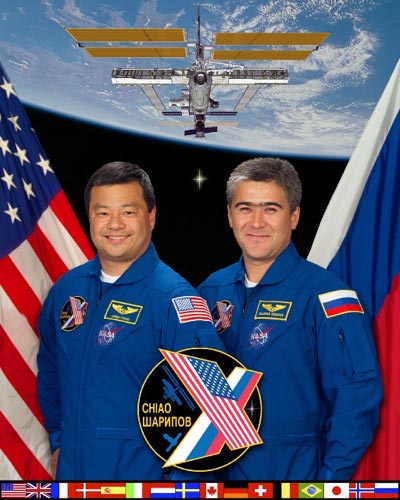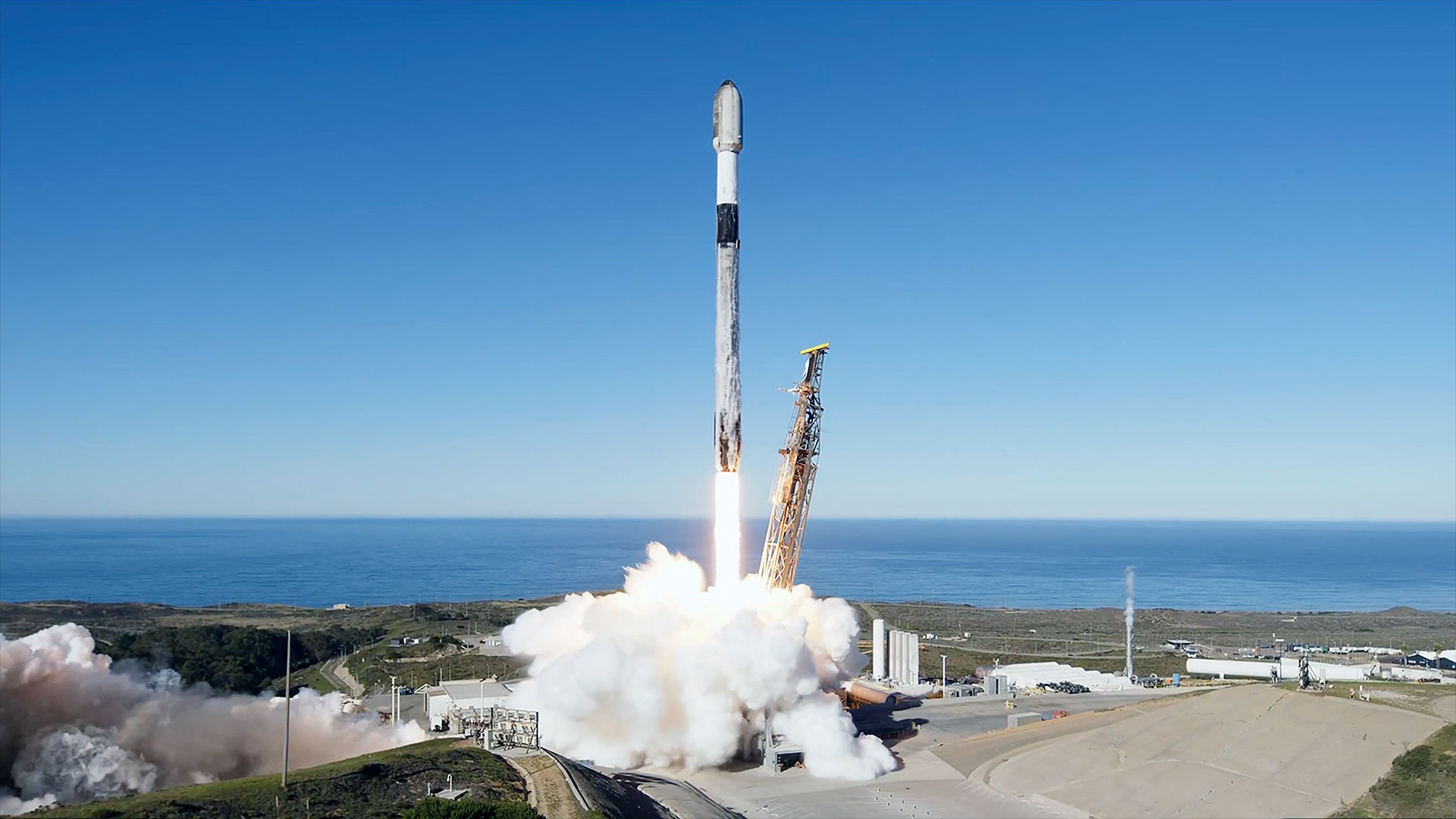Oxygen, Food a Prime Concern for Next ISS Crew

International Space Station (ISS) officials have listed food and oxygen supplies among their top concerns for the next astronauts bound for the orbiting facility, and are drawing up plans to de-crew the station if stores dip too low.
As the launch date approaches for the crew of ISS Expedition 10 and a visiting cosmonaut, space station managers are working to ensure the station will be able to support human occupants for the planned six-month mission.
"Things look very good, though food and oxygen will be a little tight by the Progress 16 launch," said William Gerstenmaier, NASA's manager for the ISS program, during a teleconference with reporters today. Progress 16 is the first resupply mission slated for Expedition 10, and expected to dock at the ISS on Dec. 25, he added.
Expedition 10 commander Leroy Chiao and flight engineer Salizhan Sharipov are scheduled to launch from Baikonur Cosmodrome in Kazakhstan on Oct. 11 at 12:17 a.m. EDT (0417 GMT). Riding with them will be Russian Space Forces test cosmonaut Yuri Shargin, an ISS visitor who will return with the current station crew, Expedition 9's Gennady Padalka and Michael Fincke, on Oct 19.
Gerstenmaier said that a problematic Russian oxygen generator, known as an Elektron, prompted ISS planners to evaluate the limits of consumables like food and oxygen and determine parameters where it may become necessary to evacuate Chiao and Sharipov from the ISS. There has been little debate among ISS planners over the decision to send Expedition 10 without a working Elektron, he added.
"There was pretty good consensus today and no dissenting opinions," Gerstenmaier said of a recent ISS operations review meeting. "We have oxygen in the [storage] tanks, and then we also have a fairly good chance of having the Elektron running again."
The Elektron device failed earlier this month, and Padalka and Fincke have been working to repair it while dipping into their backup air supplies. The space station currently has a total of about 162 days worth of oxygen stored in an attached Progress cargo ship, oxygen-generating candles and in storage tanks. A red line has been drawn at the 45-day mark, though ISS officials said it's not a final deadline to abandon the station.
Breaking space news, the latest updates on rocket launches, skywatching events and more!
"It's not a hard, black and white constraint that at that point we come home," Gerstenmaier said. "If there's a Progress scheduled to come, we'll make sure we're prepared with that."
Should the ISS crew have to leave the station, they would leave it in an autonomous mode akin to that used during recent spacewalks in which two crewmembers leave the station empty, he added.
There are two supply ships scheduled to dock at the ISS during the Expedition 10 mission, Progress 16 and Progress 17, the latter expected to launch in February 2005. A new Elektron device, and additional oxygen-generating candles are not expected to be ready until at least January 2005. A U.S.-built oxygen generator should be ready for ISS use by 2006.
Russia's unmanned Progress cargo ships typically carry about 25-50 kilograms of oxygen, though that can be increased up to 100 kilograms depending on the need. In addition, other forms of oxygen, including the oxygen-nitrogen mix we call air and oxygen-generating candles can also be stuffed into a supply ship.
"There are lots of different ways to bring oxygen up," Gerstenmaier said.
ISS officials said they are also preparing the ISS for the planned arrival of NASA's Discovery space shuttle, slated to launch sometime in March 2005, by preparing new cameras to launch to the station and plans to rearrange cargo prior to the shuttle docking. A number of space station modules and other hardware based at Florida's Kennedy Space Center (KSC) have also weathered the effects of several hurricanes rather well and is wrapped up tight for this weekend's anticipated arrival of Hurricane Jeanne, Gerstenmaier said.
In addition to their science and station duties, Chiao and Sharipov are expected to conduct two spacewalks and move a Soyuz between docking ports during their expedition.

Tariq is the award-winning Editor-in-Chief of Space.com and joined the team in 2001. He covers human spaceflight, as well as skywatching and entertainment. He became Space.com's Editor-in-Chief in 2019. Before joining Space.com, Tariq was a staff reporter for The Los Angeles Times covering education and city beats in La Habra, Fullerton and Huntington Beach. He's a recipient of the 2022 Harry Kolcum Award for excellence in space reporting and the 2025 Space Pioneer Award from the National Space Society. He is an Eagle Scout and Space Camp alum with journalism degrees from the USC and NYU. You can find Tariq at Space.com and as the co-host to the This Week In Space podcast on the TWiT network. To see his latest project, you can follow Tariq on Twitter @tariqjmalik.
